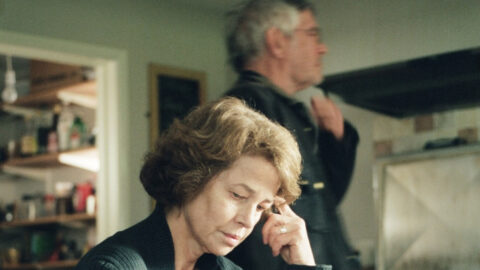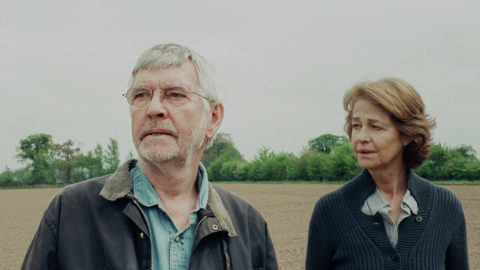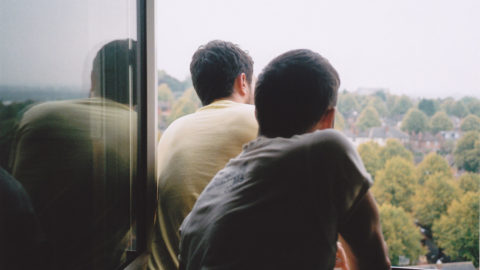Film of the Week: 45 Years
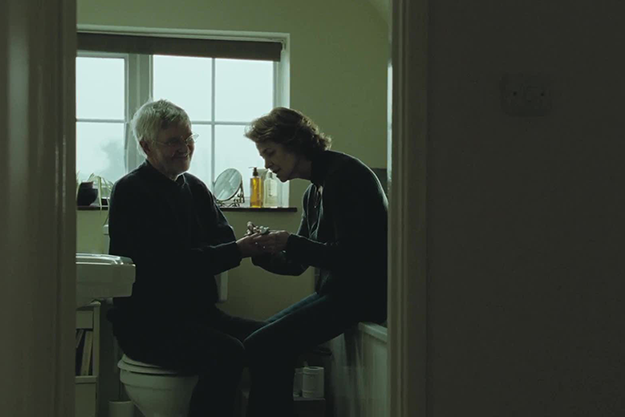
British writer-director Andrew Haigh made his name with his second feature, the realist gay romance Weekend (11), about the beginning of a relationship. His follow-up 45 Years is about the end of a relationship—or, at least, a moment late in a long marriage. It’s also about a relationship’s prehistory—its backstory, if you really must. The terrible event that makes 45 Years so intensely charged has happened long before the action begins—more than 45 years earlier, in fact—and what Haigh shows us is a sort of extended aftershock, following the belated bringing to light of something long forgotten. Haigh established himself in Weekend as a master of understatement; 45 Years confirms that not showing us is absolutely his forte.
The opening shot shows us an unremarkable house in a small quiet fold on a rural horizon. We’re in Norfolk—an eastern county of England that’s generally regarded as somewhat hard to get to from most places, if not actually isolated. In dramatic terms, it’s the kind of locale you might expect to be inhabited by people whose existences haven’t changed for some time. The Mercers, Kate (Charlotte Rampling) and Geoff (Tom Courtenay), have lived here for years: she was a local schoolteacher, he worked in management in a nearby factory. They’re both retired, thoughtful, cultivated, left-wing, and they’re about to throw a party to celebrate 45 years of married life.
We meet Kate returning from her daily morning walk with the dog: the postman has delivered a letter and it contains a bombshell. “They found Katya,” Geoff quietly announces. “I know I told you about my Katya,” he adds—and that quiet “my” is the first of the film’s depth charges. Years ago, in the early Sixties before he and Kate met, he loved a young German woman; while they were out walking in the Swiss Alps, she fell into a chasm and died. Now she has been found, her body perfectly preserved in a glacier. “How strange it would be, though,” muses Geoff in a quiet leap of philosophical fantasy, “if she looked like she did in 1962, and I look like this.” All this emerges in a long take in the couple’s kitchen, during which time a cozy domestic space gradually becomes intensely claustrophobic.
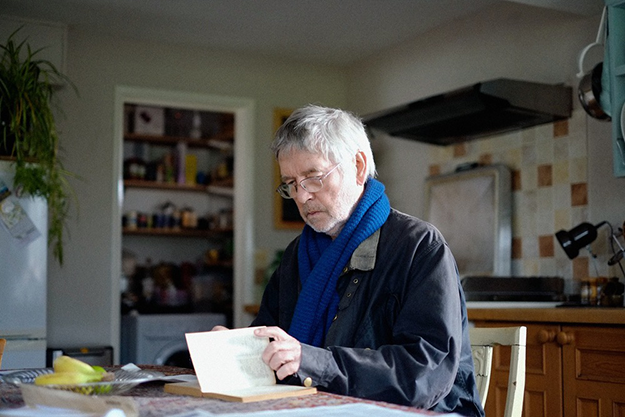
The drama—told chapter by chapter over several days of a single week—traces the process by which the couple’s relationship, and Kate’s sense of their past, are slowly affected by the presence of an invisible intruder, a person possibly not even mentioned for decades, but who suddenly becomes the ghost in the household. Kate senses she suddenly has a threatening rival in this eternally young woman frozen by time and memory; Katya’s name suggests a menacing doppelgänger, or the young Geoff’s desire to find a similarly named woman to replace his lost love. Perhaps Katya is the secret that has played a much larger part in his life than he has ever let on, and that he has perhaps deliberately been keeping under wraps; it’s as if, all along, this marriage has always concealed a lie, even if only a lie of omission. On their trip, it emerges, Geoff and Katya posed as a married couple. He mentioned it to Kate, long ago—or did he? “I’m sure I did,” he hesitates—Courtenay’s delivery, woolly and distracted, gives a wonderfully casual tone to Geoff’s evasion—“and if I didn’t, it’s hardly the sort of thing you tell your beautiful new girlfriend, is it?”
The power of this drama, based on a short story by David Constantine, stems from the discrepancy between, on one hand, the horrific strangeness of Katya’s death and resurgence, and on the other, the mundanity of the world in which this drama unfolds. When Kate goes to look at the venue for their anniversary party—a stately Georgian-era banqueting suite—the manager tells her that the place is “so full of history, like a good marriage.” We don’t learn much about this particular marriage, other than that Kate and Geoff sparked on a dance floor in Leeds—but while they’ve clearly been comfortable together for years, this may well be a marriage without history, without significant events. They have no children, but more importantly, they have no catalog of photographs to document their shared existence. History, it seems, happened before they met—and it happened primarily to Geoff. The film focuses on Kate’s experience as someone who suddenly finds herself radically excluded—the bystander looking on at someone else’s dramatic life event.
In its simplicity, 45 Years is the kind of film that once would routinely have been dismissed as being too much like a TV movie—that is, like the one-off TV dramas that used to get made in the U.K., written by writers of the caliber of Alan Bennett, or directed by the likes of Stephen Frears or Philip Saville. But such single dramas are a thing of the past, while British cinema has almost entirely turned its back on serious treatments of middle-class subject matter, whether because such material isn’t considered sexy at the box office, or because it’s seen as elitist, boring, and fundamentally uncinematic (recent exceptions include Joanna Hogg’s films, and Mike Leigh’s Another Year). In the current climate of UK cinema, 45 Years is a striking anomaly, and a rigorously executed one.
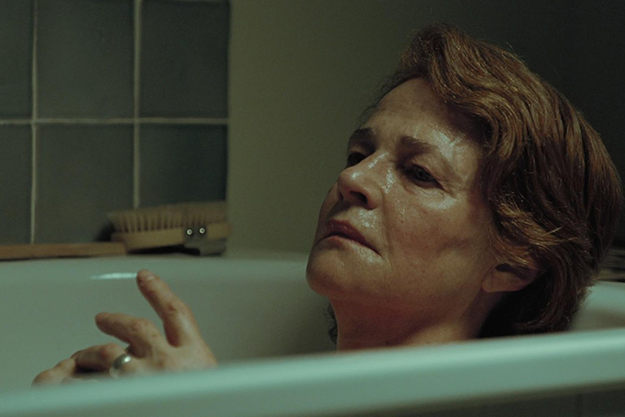
This classic “return of the repressed” story is psychological drama at its most delicate and acute. There are little telling touches of cultural detail that make the couple real—the Sixties pop that Kate chooses for their party, the fact that Geoff listens to Lee Hazlewood in his solitary moods, the upmarket popular history paperback she reads (Simon Sebag Montefiore’s Jerusalem). But above all, so much is revealed by simple implication. We notice that Kate is the one who drives the car: Geoff seems happy to be dependent on her, and as a man who doesn’t get out much, he seems to have given up on much of life, as if his real life happened before he married.
There’s a wonderful piece of withholding in a crucial scene. When Geoff goes up to the attic to dig out a picture of Katya, Kate angrily insists that he show it to her. She stares at the picture, but Haigh doesn’t let us see it: Kate leaves it resting on the attic steps and walks away, and Haigh just leaves us looking at the steps. We do get to see Katya later, in fact, when Kate looks at Geoff’s old slides of her. Haigh pitches it perfectly, dividing the space of the screen in two so that we’re looking at Kate as she gazes at the projection of Katya. And this is where we see Rampling’s face register the realization that there’s more to her husband’s youthful romance than she realized; while watching this, I thought of all the other filmmakers, British or otherwise, who would have insisted on lacing the film with young actors in Alpine flashbacks, and appreciated Haigh’s discretion all the more (even if he’d had the budget, I can’t imagine him considering it).
Rampling and Courtenay are superb. He gives us a marvelously cantankerous character study in the beautifully written scene in which, after a works luncheon, the generally diffident Geoff lets rip in the car about how one of his old radical friends has sold out to the system. Courtenay plays Geoff as a bit of a bumbler, somewhat soft and feminized, as if his masculinity had departed long ago; and Geoff clearly carries his advancing age much more heavily than Kate does. She’s svelte, youthful, while Courtenay casts vanity aside to show us Geoff in his Y-fronts, distinctly paunchy and a victim of time and gravity. But there’s a brilliantly counterintuitive streak in the casting. For Geoff is the one who has a led a life, a secret life at that, while Kate’s history remains an unknown to us: maybe she’s never lived, not in a way you’d consider dramatic. Rampling, not someone you would normally cast as a homebody, is an actress whose face and knowing, silky voice (not to mention the louche associations of her filmography) suggest deep dimensions of experience, knowledge, and urbane sophistication. She has the eyes of someone who’s seen the world and figured that world out—but here, she plays a woman who might well be confronting darker realities for the first time. There are wonderful non-verbal moments where Kate’s doubt and pain become eloquently palpable: like a shot of her gazing at him in bed in the dark, or Kate waiting for Geoff in a café, the slight droop of her shoulders, silhouetted against the window, speaking volumes about the sudden seismic shift in their relationship.
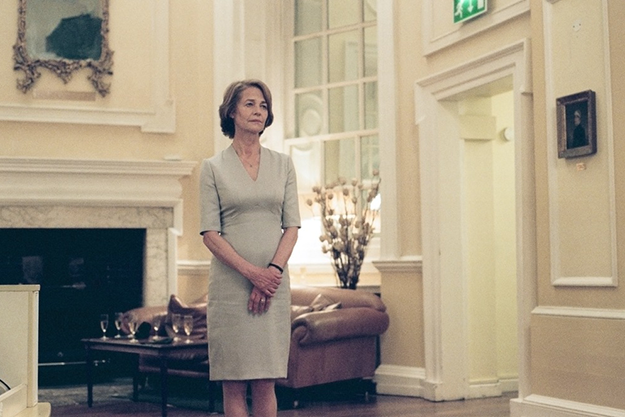
The visual detail is perfectly pitched—in Sarah Finlay’s production design, the décor of the Mercers’ home has clearly little changed since the Eighties or thereabouts, suggesting either staleness or their stable contentment with unostentatious comfort. DP Lol Crawley captures an autumnal state of nature and of soul, from the brown unpretty leaves around the cottage windows to the flatness of the Norfolk Broads, with a miniature Mississippi-style riverboat looking absurdly, and resonantly, landlocked on a placid waterway.
There’s telling use of sound, like the impressionistic effect of a distant eerie draught that seems to come from the attic door, as if Alpine winds are blowing through the house, making this a very discreet domestic form of English ghost story. Over the opening credits, the obsolete sound of a photographic slide carousel (now remembered only by people of a certain age, or Mad Men viewers) suggests the years clicking slowly away. And notice the perfect timing with which, right at the end, a certain Moody Blues number kicks in over the end credits—just after an extended, wordless, sublimely choreographed, beautifully painful closing shot that reminds us why the face of Charlotte Rampling is one of the most eloquent signifying surfaces in today’s cinema.



